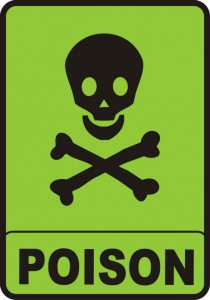Our stoves, fireplaces, and furnaces are absolutely essential appliances during the cold months of winter. They heat our homes and allow us to stay comfortable and warm no matter the temperature outside. However, if not properly serviced and maintained they can create a serious safety hazard for you and your family.
Carbon monoxide poisoning is most often caused by malfunctioning heating appliances. It affects thousands each year and kills more than 400 people each year in the United States. However, homeowners can greatly reduce their risk of being exposed to this deadly gas by following simple safety precautions.
What is carbon monoxide?
Often called the “silent killer” because it is clear, tasteless, and odorless, carbon monoxide is produced in almost all combustion reactions. It is a byproduct of burning coal, wood, propane, kerosene, and natural gas. Because of this, all homes should be equipped with carbon monoxide detectors on every floor, which are the only reliable way to alert you if the gas is present.
What are the symptoms of carbon monoxide poisoning?
In small amounts, carbon monoxide poisoning may present itself with flu-like symptoms including sleepiness, headache, and nausea. If exposure to the gas continues, these symptoms will continue to get worse and those exposed will begin to have diminished cognitive functioning, impaired coordination, and impaired vision. With long term exposure or in large doses, carbon monoxide poisoning can cause a coma and lead to death.
If you believe you are experiencing the symptoms of carbon monoxide poisoning, immediately move to a fresh air location such as near an open door, window, or outdoors whenever possible. Then, call emergency services or poison control, and do not reenter the building until it has been cleared.
What causes carbon monoxide?
Carbon monoxide is a naturally occurring byproduct of many combustion reactions. Because of this, nearly all fuel burning appliances create it. However, all fuel burning appliances are designed to safely vent carbon monoxide outside and away from homeowners and their families. If these vents become blocked or the appliance is damaged, carbon monoxide may flow back into the home. Some of the most common culprits for carbon monoxide leaks are fireplaces and stoves with improperly vented or blocked flues, portable generators being used indoors, cars left running in closed garages, leaky chimneys, defective furnaces, and gas stoves being used to heat a room.
How can you prevent carbon monoxide poisoning?
Although the threat of carbon monoxide poisoning should be taken seriously – especially during the heavy use periods of heating appliances during the winter months – regularly serviced and well maintained appliances pose little risk. There are also several steps homeowners can take to reduce their risk of exposure to carbon monoxide gas.
First, it is extremely important that the venting and ductwork for heating appliances is cleaned and inspected each year to ensure that it is still venting carbon monoxide correctly. Likewise, fireplaces and chimneys should be inspected to ensure that no carbon monoxide is leaking through the masonry and back into the house.
Cars should never be allowed to idle in garages, even if the door is open. Likewise, avoid using outdoor grills near doors or windows to prevent carbon monoxide from reentering the home. Finally, ovens should never be used as a way to heat a room and space heaters should be used sparingly or only if they include a way to vent through an open window.
By following these simple tips, homeowners can keep themselves and their families safe while still enjoying their heating appliances all winter long.

